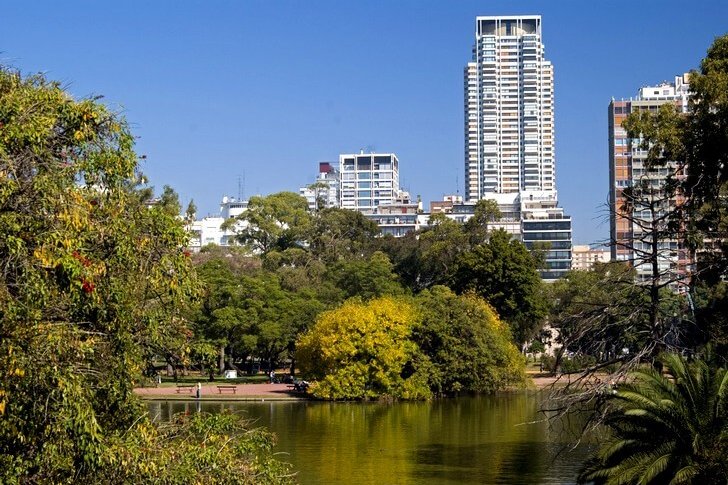Buenos Aires is a vibrant, bustling, and incredibly large city. At first, from the number of sounds and information, you can just get confused. No wonder - after all, this is a huge metropolis, the economic and political center of Argentina, where life beats with a powerful stream.
But one has only to take a breath and look around, as the Argentine capital will begin to open up from a completely different side. On the picturesque streets of the La Boca district, you can admire couples dancing tango right on the pavement.
In the historic center of the city, the squares are surrounded by magnificent colonial-style mansions, reminiscent of centuries of Spanish rule. In the exhibition galleries, original Latin American art appears before the viewer in all its glory.
What to see and where to go in Buenos Aires?
The most interesting and beautiful places for walking. Photos and a short description.
- Puerto Madero
- La Boca
- Recoleta Cemetery
- Avenida Nueve de Julio
- Obelisk
- May Square
- Theater Colon
- Cultural Center Usina del Arte
- Kirchner Cultural Center
- National Museum of Fine Arts
- Museum of Latin American Art
- National Museum of Decorative Arts
- Proa Foundation
- Basilica Santisimo Sacramento
- Cathedral of Buenos Aires
- Basilica of Nuestra Señora del Pilar
- Palace of the National Congress of Argentina
- Casa Rosada
- Palace of Water
- Palacio Barolo
- Floralis Generica
- Torre Monumental
- Bridge Women
- Frigate President Sarmiento
- Bombonera Stadium
- Pacifico Gallery
- El Ateneo Grand Splendid
- Cafe Tortoni
- Botanical Garden of Buenos Aires
- Tres de Febrero Park
Puerto Madero
One of the most prestigious areas of Buenos Aires, which is located on the shores of La Plata Bay. Previously, there was an old port here, but with the construction of the new harbor of Puerto Nuevo, it was abandoned and gradually turned into a criminal area. In 1990, mass construction began in Puerto Madero as part of a renovation. As a result, offices, restaurants and luxury hotels appeared on the site of abandoned docks and warehouses.
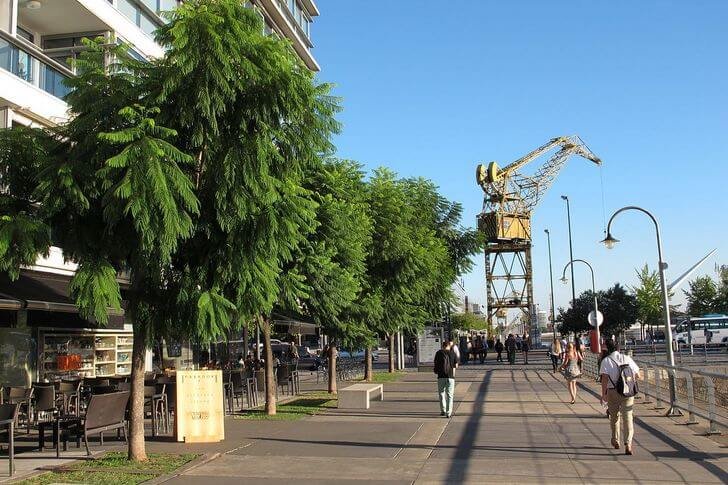
La Boca
The area is located in the southeast of Buenos Aires. It was on this spot that the founder of the city, Pedro de Mendoza, laid the first settlement in the 16th century. First, slaves lived in La Boca, then a port was located here, at the beginning of the 19th century, emigrants began to actively develop the area. This part of the city is known for its unusual colored houses, fun carnivals and residents, most of whom are creative people.
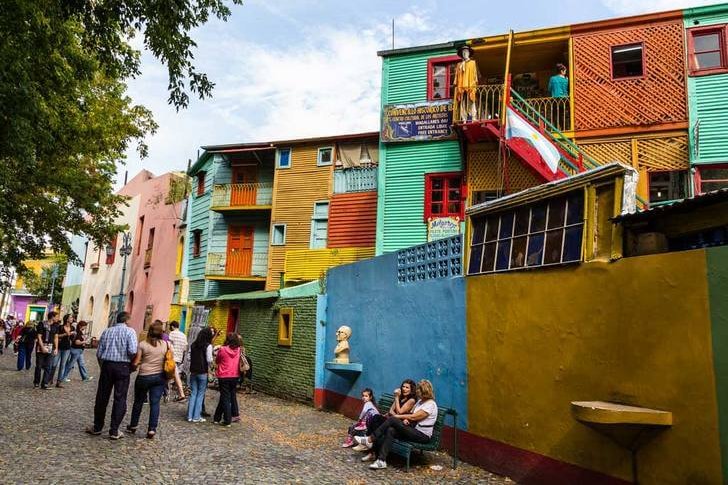
Recoleta Cemetery
The necropolis is located in the area of the same name. It is known as the burial place of famous Argentines who left their mark on the history of the country. Many crypts and monuments of the cemetery are recognized as cultural sites. The first burials appeared here in the 19th century on the site of the former monastic lands of the Franciscan monastery. 19 presidents of Argentina, politicians, artists, writers and singers are buried in the cemetery.
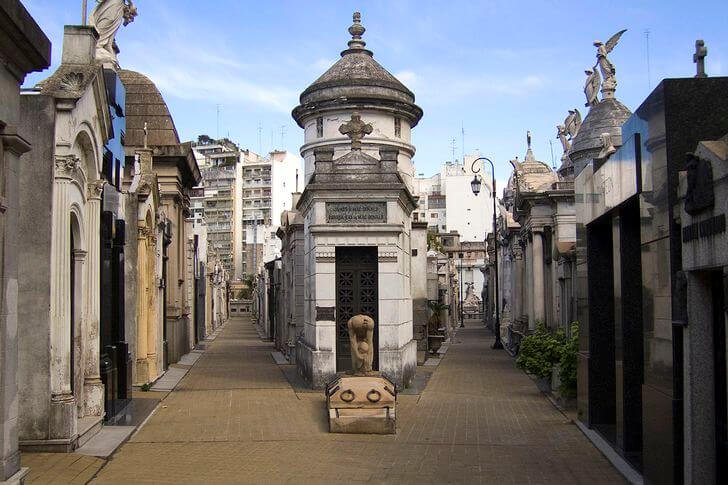
Avenida Nueve de Julio
The widest avenue in Buenos Aires and worldwide is 110 meters. Due to its huge size, it took several years to build. There are seven lanes for cars in each direction. The street got its name in honor of the declaration of independence of the country on July 9, 1816. Famous sights are located along the avenue: an obelisk, Republic Square, a monument to Don Quixote, the Colon Theater.

Obelisk
Monument on Republic Square, erected in 1936 in honor of the 400th anniversary of Buenos Aires. The base area of the obelisk is 49 m², the height is 67 meters. For a long time, the inhabitants of the city were cool about this attraction, several times they even wanted to demolish it. But over time, the obelisk and the space around it turned into a venue for city holidays and public events.

May Square
The central square of the Argentine capital, from where the city originates. It has existed since the end of the 16th century. The main events of the May Revolution of 1810-16 (hence the name) took place here. The central monument of the square is the May Pyramid, the construction of which was initiated by members of the First Junta of Argentina. In 1912, the monument was reconstructed and moved to a new location.

Theater "Colon"
Buenos Aires Opera House, built at the beginning of the 20th century in a classical style with elements of a colonial style. Earlier in the middle of the 19th century, the troupe was housed in another building, subsequently sold to the National Bank of Argentina. The stage is designed for 2500 thousand seats, works by D. Verdi, J. Bizet, R. Wagner, C. Gounod, W. Mozart and other famous classics are staged here.
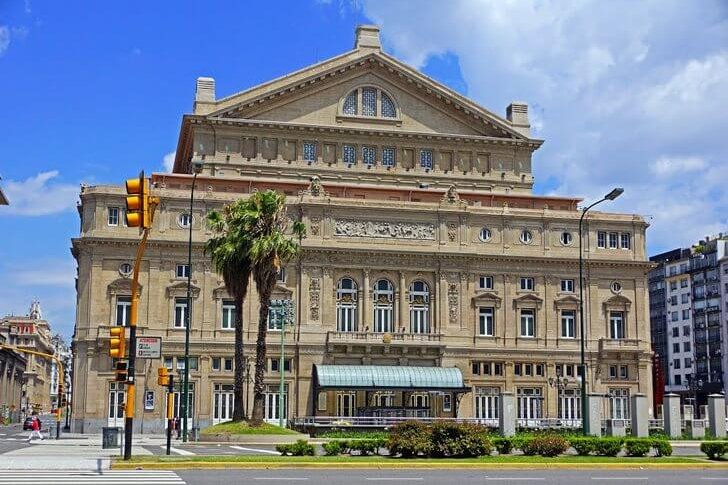
Cultural Center "Usina del Arte"
The cultural center is located in a 1916 building built in an eclectic style with elements of the Italian Neo-Renaissance. Previously, a power plant was located here, after reconstruction, the premises were converted into art workshops, galleries and concert venues, where performances, festivals and other interesting events take place. Some events can be visited for free.
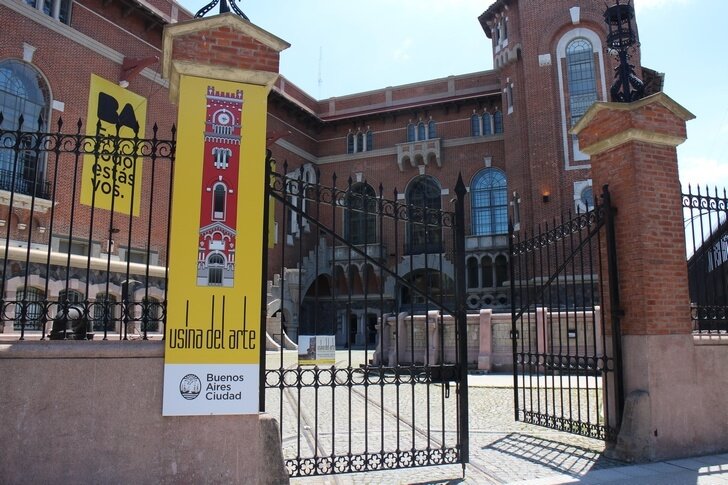
Kirchner Cultural Center
The complex opened in 2015 in the building of the former post office. He was named after Nestor Kirchner, one of the Argentine presidents. Here you can get acquainted with the achievements of the country's culture and industry, see the inhabitants in their natural environment - they sing, dance, play various instruments and simply enjoy life. The halls of the center host exhibitions of local artists, concerts and performances.
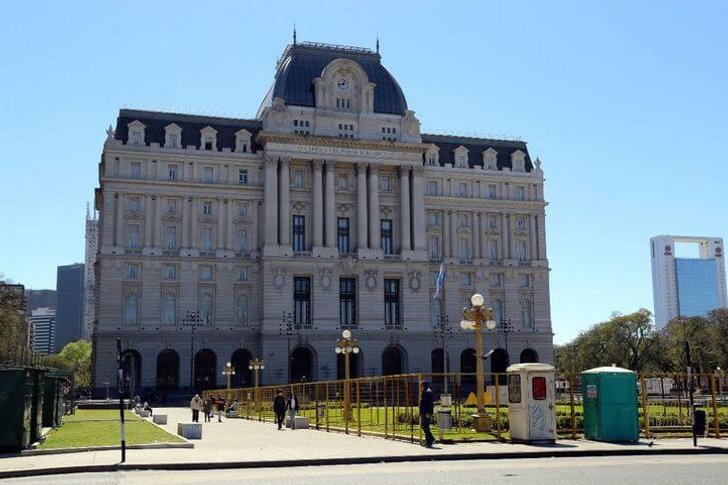
National Museum of Fine Arts
Art Museum, which opened at the end of the XIX century. The first floor exhibits works by artists from all over the world, dating back to the Middle Ages. The second is dedicated to the collections of local painters of the 20th century: B. K. Martin, A. Berni, E. Sivori, R. Forner, A. Gutiero and others. The third one hosts a photography gallery and two terraces with sculpture exhibitions. The museum has a library.

Museum of Latin American Art
As the name suggests, the collection is dedicated to Latin American art. The museum was founded by local millionaire and philanthropist E. Constantini in 2001. The exposition is based on works of art from his personal collection. Today the museum displays more than 400 works belonging to 160 artists. Among them are the works of Frida Kahlo and Fernando Botero. All exhibits belong to the 20th century.

National Museum of Decorative Arts
The museum's collection is located in a mansion of the early 20th century, previously owned by a wealthy Argentine family. The building was built in the style of French classicism, its interior is made in a baroque style, which is distinguished by rich decor. The halls are decorated with stucco, gilding and luxurious mirrors. The museum exhibits paintings, sculpture, furniture, tapestries, porcelain and interior items.

Proa Foundation
Private museum in the La Boca area, founded in 1996. Like many galleries in Buenos Aires, it specializes in Latin American art. The Proa Foundation is constantly becoming a platform for interesting exhibitions, concerts and conferences. The collection is housed in a late 19th century building. In the 2000s, it was thoroughly reconstructed, significantly expanding the exhibition space.
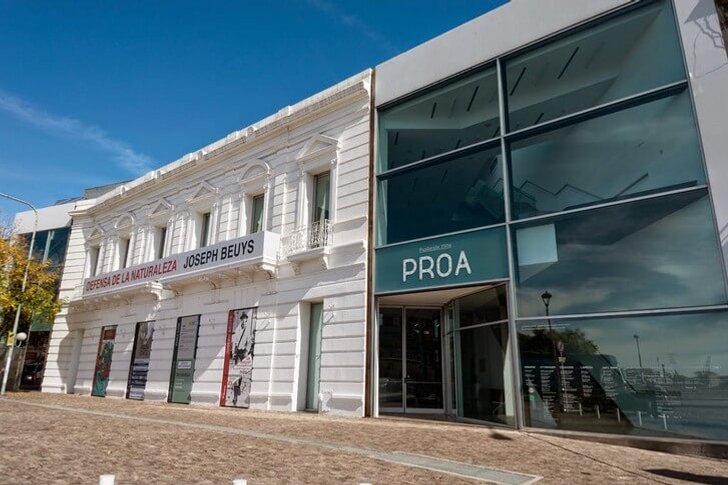
Basilica Santisimo Sacramento
An elegant and large Catholic cathedral with magnificent decoration. It seems that he is not in Argentina, but somewhere in the south of the Old World. Moreover, the appearance of the church seems quite modest, all the beauty is hidden inside. The temple is decorated with colored stained-glass windows, statues and paintings. The interior is generously decorated with marble details. Even on a very hot day inside the basilica, visitors will be greeted with a long-awaited coolness.

Cathedral of Buenos Aires
The temple was built in the period 1754 - 1823. During this time, the state system changed in Argentina, but the new authorities showed no less interest in the construction than the overthrown Spanish administration. The cathedral was built in the classical style: the front facade is closed by a row of Corinthian columns with a triangular pediment. Inside, the walls are painted in the Renaissance style, and the floor is covered with Venetian mosaics.
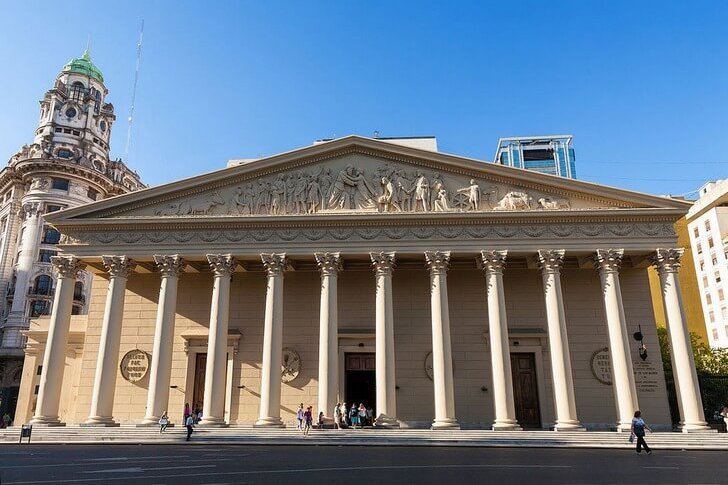
Basilica of Nuestra Señora del Pilar
This temple is one of the oldest in Buenos Aires. It was built in 1732 on St. Martin's Square. The interior and exterior decoration of the building is made in the Baroque style. The basilica has a museum where old books, religious utensils, vestments and statues of saints are kept. Visitors can climb the bell tower to take a look at the surroundings and nearby attractions.

Palace of the National Congress of Argentina
A grandiose neoclassical building on Congress Square, designed by V. Mean in 1946 for meetings of the Argentine government. It occupies the territory of the whole block. The huge central dome reaches a height of 80 meters. In the external appearance of the palace, one can find all the characteristic features of neoclassicism: columns, rotundas, sculptures of winged lions and chimeras, as well as massive decoration elements.
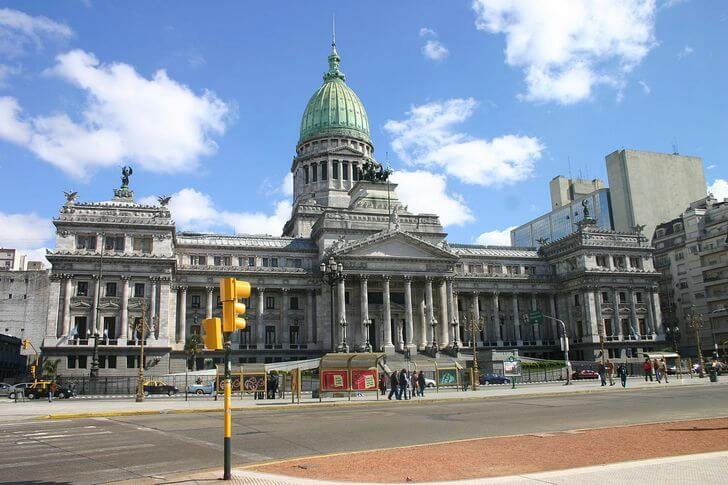
Casa Rosada
The working residence of the President of Argentina, located on May Square. The building is a picturesque pinkish palace, built with a bias in the Spanish colonial style. The mansion was erected at the end of the 19th century according to the project of K. Kilberg. In order to emphasize the beauty and elegance of the building, bright pink illumination is switched on on the facade in the evening.
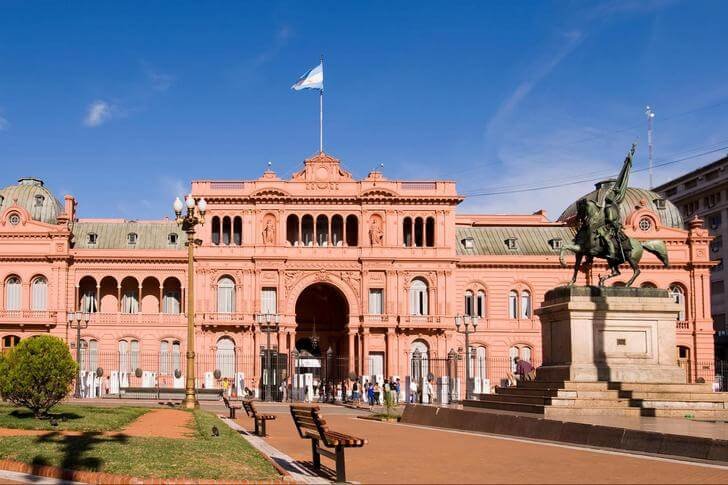
Palace of Water
The palace was erected at the end of the 19th century in an elaborate architectural style that gravitates towards eclecticism and at the same time towards the imperial style. The facade of the building is lined with English ceramic tiles and glazed bricks. Previously, there was a water supply unit and a reservoir inside, now there is a museum dedicated to water supply and an archive on the ground floor. In 1987, the Water Palace was declared a historical monument.
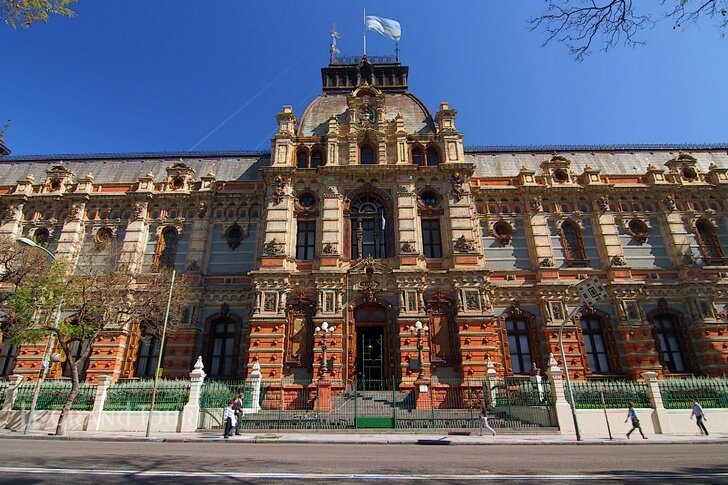
Palacio Barolo
Art Nouveau office building on Avenida da Mayo. It was erected in 1923, and, at that time, it was considered the highest in Buenos Aires. The building was designed by the Italian architect M. Palanti by order of a local businessman, Luis Barolo. Exactly the same building adorns the capital of Uruguay, the city of Montevideo. The decorative elements of the Palacio are made of Carrara marble.

"Floralis Generica"
Sculpture in the form of a huge flower made of steel and aluminum, located in the National Unity Park. It reaches a height of 23 meters, weight is 18 tons. In the morning, the flower opens its petals towards the sun, and in the evenings it folds back into a bud. An unusual building was created by E. Catalano. The architect assumed that his creation would personify eternal spring and hope.
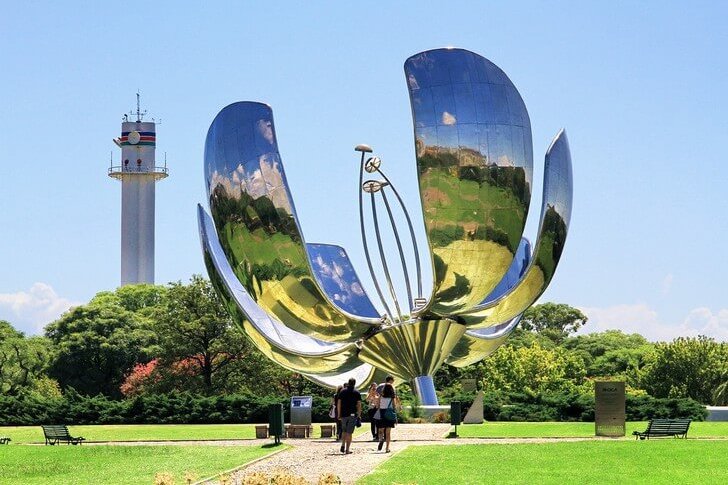
Torre Monumental
The tower was erected in honor of the 100th anniversary of Argentina's independence. The monument was designed by the British architect A.P. MacDonald. At first it was assumed that the structure would be in the form of a column, but the result was a tower. The structure is crowned with a bell tower with a dome that exactly repeats the size and shape of the dome of Westminster Abbey.
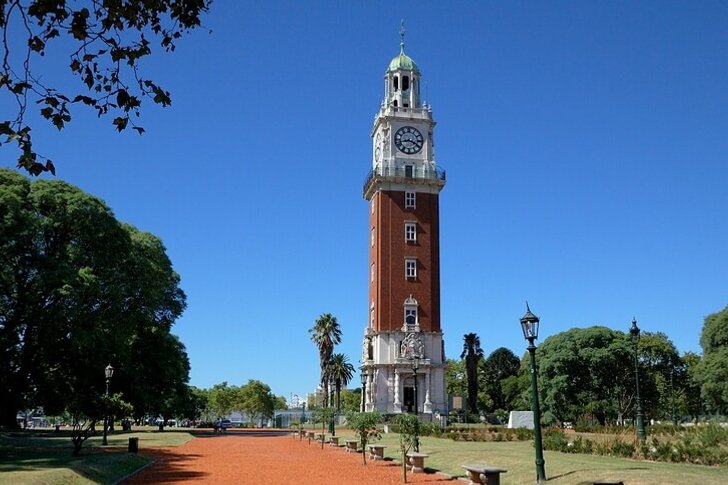
Bridge Women
The bridge was built in 1998 according to the design of the famous Spanish architect S. Calatrava (this is the only creation of the master in Latin America). As conceived by the creator, the design symbolizes a couple dancing tango. The length of the structure is 170 meters, the width is just over 6 meters. With the help of a rotating support, the bridge can quickly disperse to the sides in order to let pass ships passing by.

Frigate "President Sarmiento"
Sailing English frigate of the late 19th century, which was built to train future Argentine sailors. The ship was in service for several decades and during this time managed to make 6 trips around the world. The ship even visited the Russian Kronstadt. In 1961, the frigate was decommissioned ashore. Today, there is a museum inside, where you can see the original interior, old maps and navigational instruments.
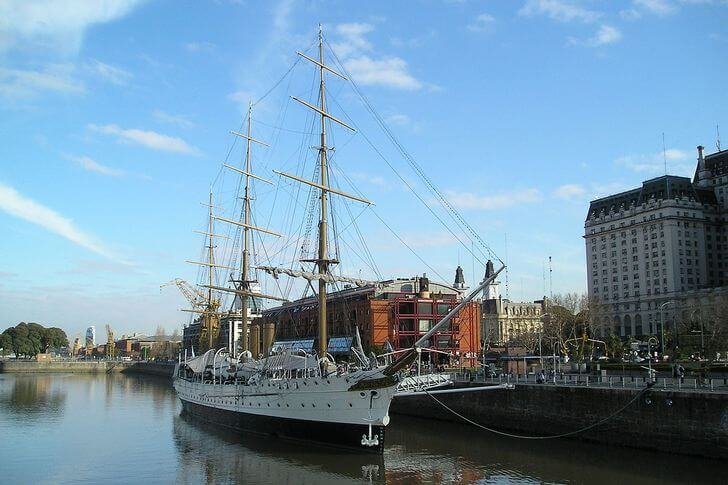
Bombonera Stadium
Football stadium of the Boca Juniors club, built in 1940. Despite its rather advanced age, the arena continues to function properly, constantly hosting matches. Its stands can accommodate more than 57 thousand spectators. At the moment when the fans begin to shout in unison in support of their team, a characteristic vibration passes through the rows, which is due to the design features.
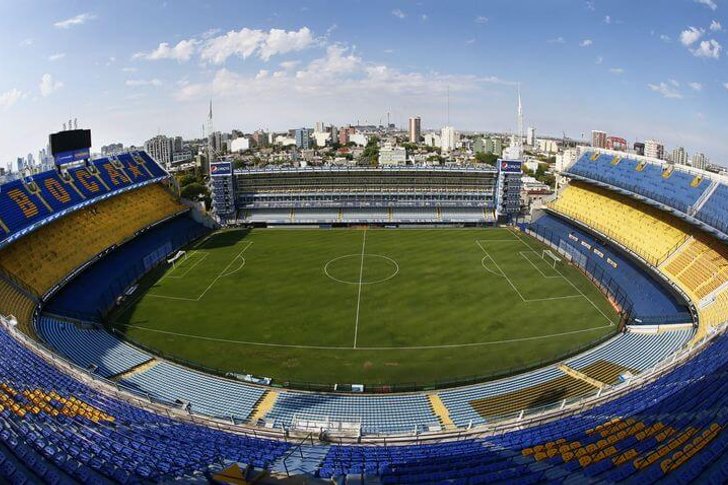
Pacifico Gallery
Shopping center, the outlines of which repeat the forms of European shopping galleries. Inside, in addition to traditional shops and restaurants, there is a small theater where they often give musical performances based on Argentine tango. The gallery also has a small exhibition hall. In all other respects, this is an ordinary large store where you can go shopping.

"El Ateneo Grand Splendid"
A bookstore located in the former Grand Splendid Theatre. At one time, the building was bought by the Ateneo network. The builders did not completely remodel the theater, but simply adapted it to the needs of the store. Today, small reading rooms are located in the boxes, and there are bookcases among the audience rows of stalls. The building was built at the beginning of the 20th century. In the past, famous tango dancers performed on its stage.
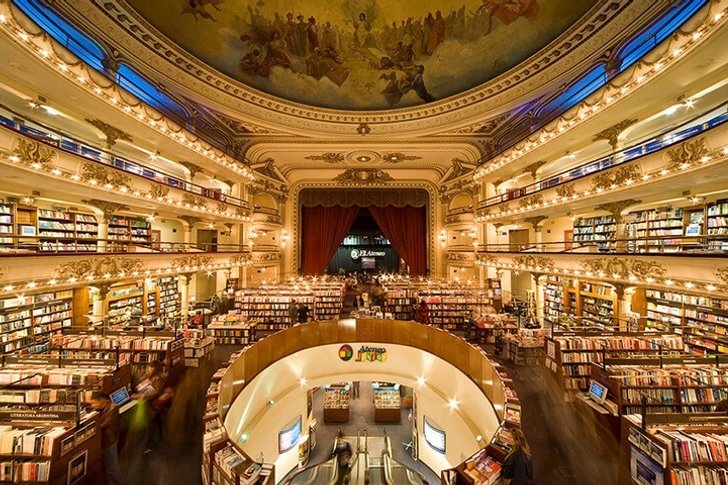
Cafe Tortoni
The cafe was opened by a French immigrant in 1858. He gave the name to the establishment in honor of the Parisian cafe on the Italian Boulevard, where in the 19th century the French bohemia liked to gather. The Argentine "Tortoni" is famous for its traditions, as well as its visitors, among whom were playwright Federico Garcia Lorca, philosopher Jose Ortega, poetess Juana de Ibaburu and even politician Hillary Clinton.
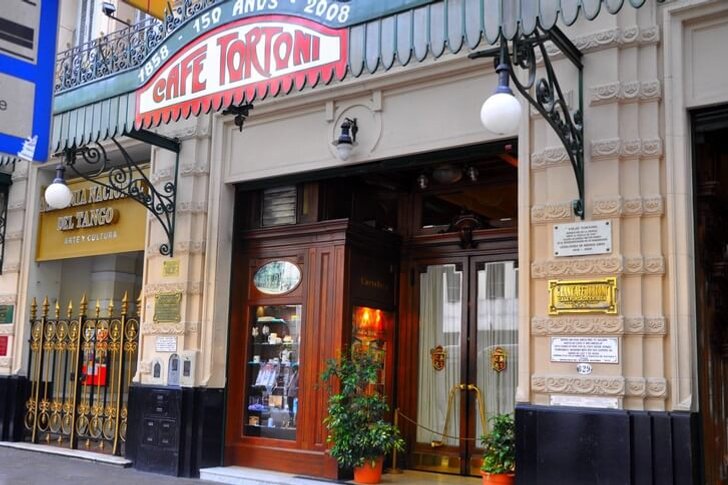
Botanical Garden of Buenos Aires
The garden is located in a suburb called Palermo. If we compare it with city parks in other capitals, it looks much more modest due to its small size (the area is only 7 hectares). More than 5500 plants grow in the garden, there are greenhouses and interesting monuments. The park was founded by the chief gardener of Buenos Aires, the Frenchman K. Theis, who settled here in his own mansion.
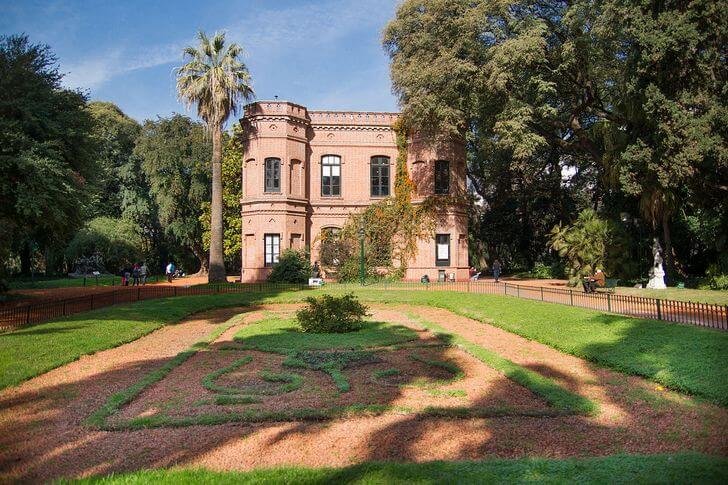
Tres de Febrero Park
Usually the inhabitants of Buenos Aires call the park "the forest of Palermo", as it is located in the area of the same name. On its territory there are three artificial lakes where visitors can ride boats, a square of poets with numerous monuments and a planetarium named after Galileo Galilei. On all sides, the park is surrounded by residential areas that have grown rapidly after the economic boom of the early 20th century.
